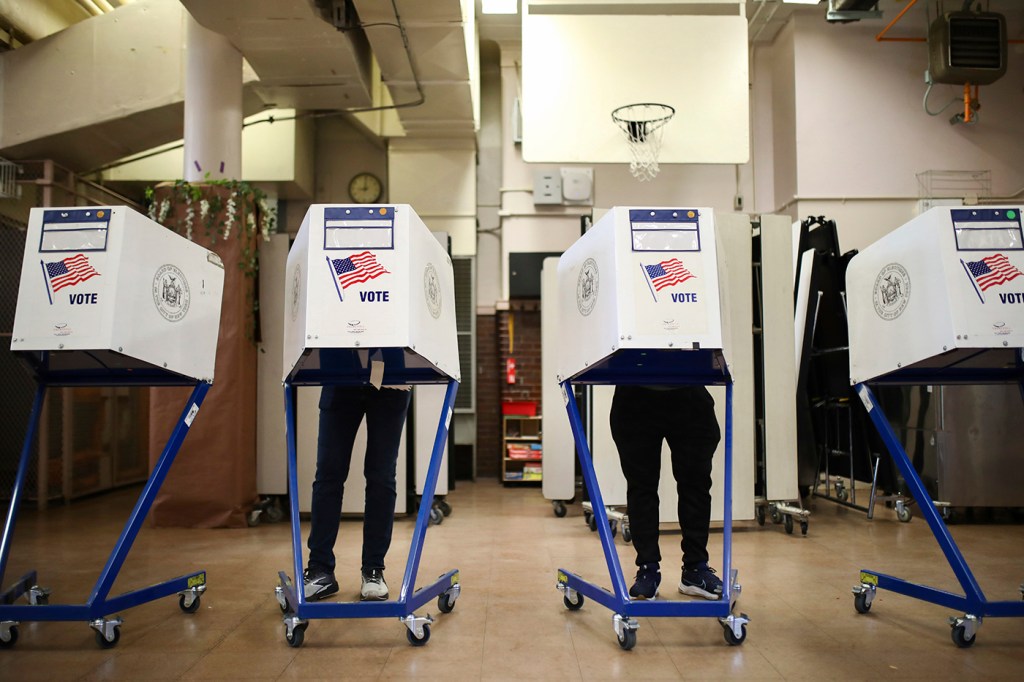How do we perceive our leaders? The answer is always in flux, new Northeastern research says
Associate professor Jayanth Narayanan has published research showing that the 2020 presidential election caused a noticeable shift in public perception of the “ideal” leader.

What does an ideal leader look like? How do they comport themselves? Does our perception of the ideal change over time?
These are the kind of questions that haunted Jayanth Narayanan, associate professor of management and organizational development at Northeastern University, during the close presidential election of 2020.
Through a series of eight surveys conducted between October 2020 and January 2021, Narayanan and his co-authors found that, regardless of political affiliation, the events surrounding the 2020 election changed the public’s perception of the “ideal” leader with regard to two specific traits: The desirability of both “masculinity” and “tyranny” declined.
Across a sample size of 600 — 200 self-identified Democrats, 200 self-identified Republicans and 200 who identified with neither party — the surveys asked respondents to rank the importance of seven characteristics in their personal, ideal leader.
Each of us likely has our own, unique view of the “ideal” leader but, over the course of research going back several decades and performed by numerous researchers, “people seem to be able to converge on these seven traits,” Narayanan says: charisma, dedication, dynamism, intelligence, masculinity, sensitivity and tyranny.
Narayanan calls these internal pictures of the ideal leader “prototypes.”
Some of these traits — like “tyranny” — might sound controversial, Narayanan notes, but are crucially dependent on our own cultural contexts. While tyranny is “a loaded term,” he says, “a strong, tyrannical leader would mean that you take action. You don’t really consider the opinion of large groups of people.
“If your values are aligned with that of the leader, you think tyranny is a good thing, right? You want them to go out there and pursue their agenda and get things done. Which is what tyrannical leaders do.”
“People do seem to think that, on average, the leader should be low on tyranny. But that’s not the case uniformly,” he says.
“Events out there in the world impact the way we think of ideal leadership,” Narayanan continues. “When you are in a particular context, that context will tell you what the ideal leader is — and when that context changes, that’s going to change your perceptions as well.”

In this case, the 2020 presidential election caused a demonstrable shift in survey-takers’ perceptions of the ideal leader.
“The important boundary condition for this result is, it has to be a close election,” Narayanan says. “If you were looking at a situation where we know for sure one side is going to win, then the prototype shifts.”
With Joe Biden and Donald Trump on the ballot, and with historically close races in several battleground states, the 2020 election was a “pivotal moment” to demonstrate these shifts, Narayanan notes.
Perhaps surprisingly, the Jan. 6 “incidents did not impact our results that much,” Narayanan says, likely because of the one modifying belief that did affect a subject’s preference for “masculinity” and “tyranny” — the perceived legitimacy of the 2020 election results.
Their results — that preferences for a masculine and tyrannical candidate went down — held across both sides of the aisle and for independents, except in the case of those who refused to accept the election results in 2020.
“It turned out that there was that period, last election, where there was a period of uncertainty,” Narayanan says. The researchers used this uncertainty period to measure perceived legitimacy of the election results.
“If you accepted the outcome, you really showed the shift” away from masculinity and tyranny, Narayanan says, “in the direction you would expect. But if you did not accept the outcome, if you thought, ‘No, you know what? Actually Trump is still president.’ Then you did not show that shift.”
“The ones that accepted the election outcome showed the greater shift for these two dimensions, that the ‘ideal leader’ is less on masculinity and lower on tyranny.”
Featured Posts
That the election was a close one, Narayanan says, may have been key in demonstrating these results. And that the two candidates stood in such stark contrast provided an almost stereophonic image for conducting these surveys.
The matchup between former President Trump and Vice President Harris is creating a similar opportunity for the researchers. “The contrast between Kamala Harris and Trump is even greater than the contrast between Biden and Trump, because Kamala Harris scores higher on charisma, actually, than Biden, [and] she scores lower on tyranny and masculinity than Biden.”
Now, in the months leading up to and continuing after the 2024 presidential election, Narayanan is conducting a new set of surveys, but this time focusing on gender.
Narayanan expects that, if Harris won, women might find “their self perception of leadership will go up. That’s one of the things we’re seeing,” he says, “whether women will feel empowered to display leadership, speak up more in organizations, actually see themselves as leaders.”
On the flipside, Harris’ loss could lead to a disempowered self-perception, Narayanan continues. “It’s a gender-divided election,” he says, and if many women “wanted her to be the president, but she’s not — maybe that will also lead to a reduction from where they are now.”
“So it could not just mean business as usual,” Narayanan says. “It could even mean a disenfranchisement of women.”












